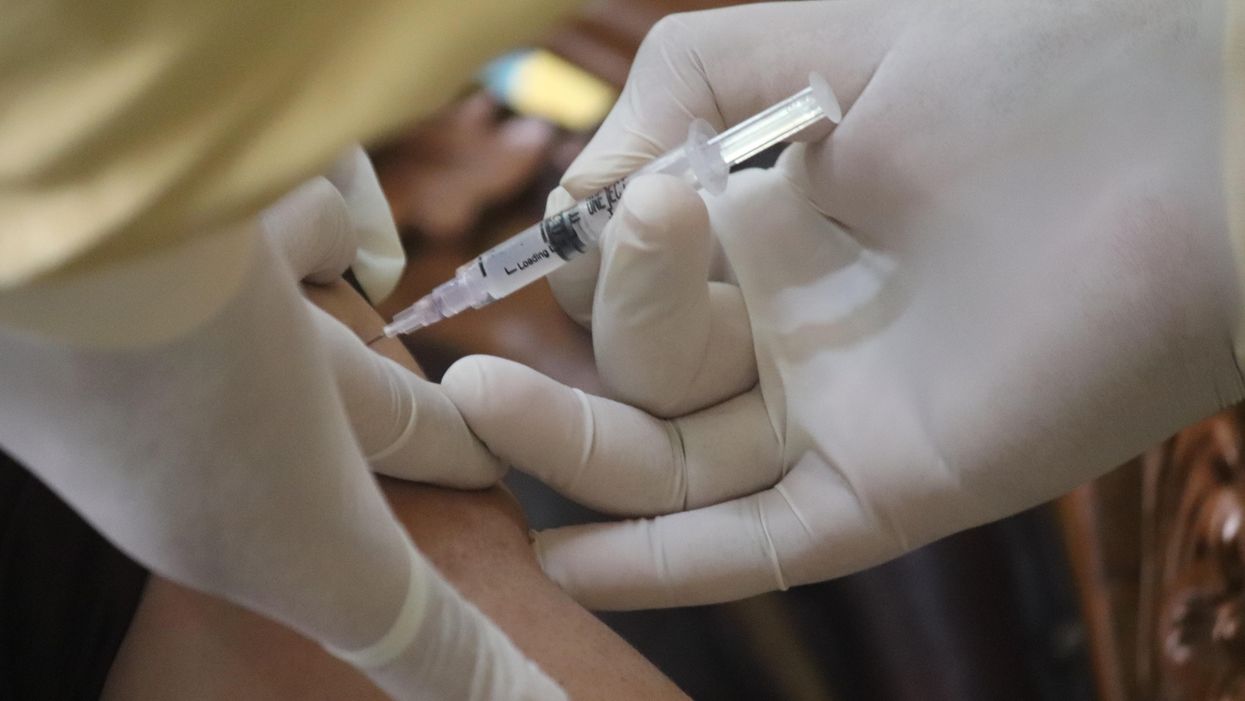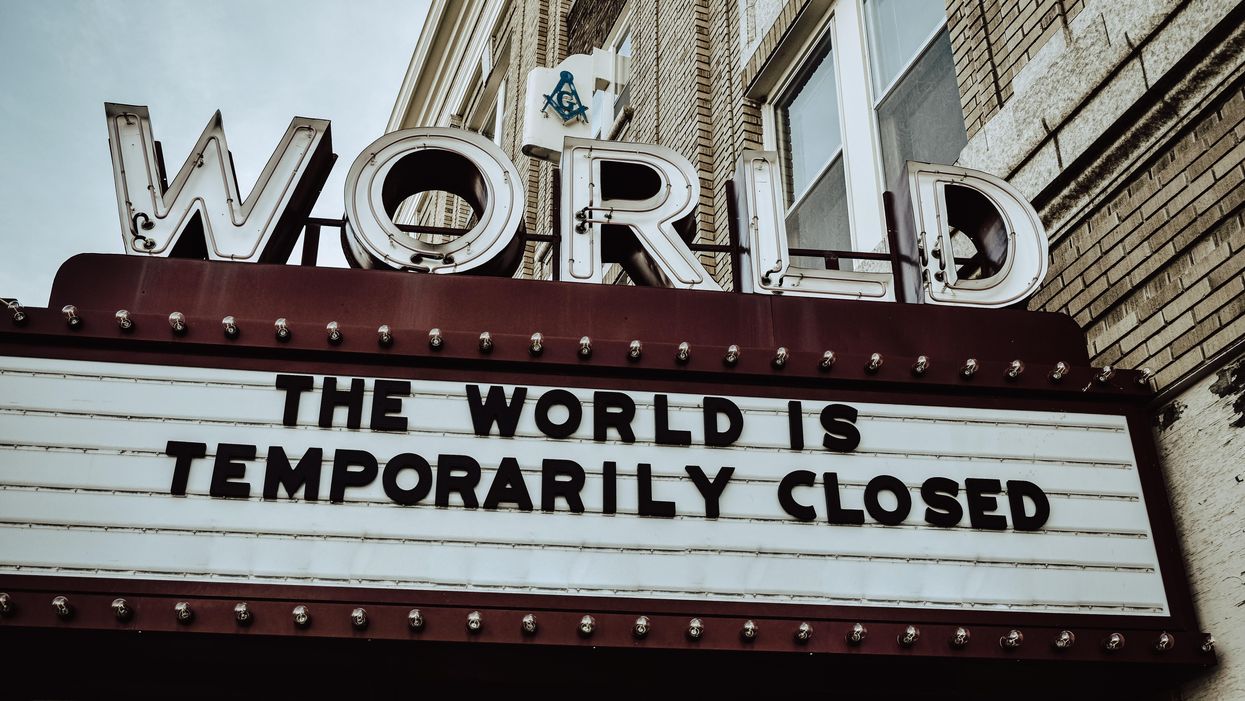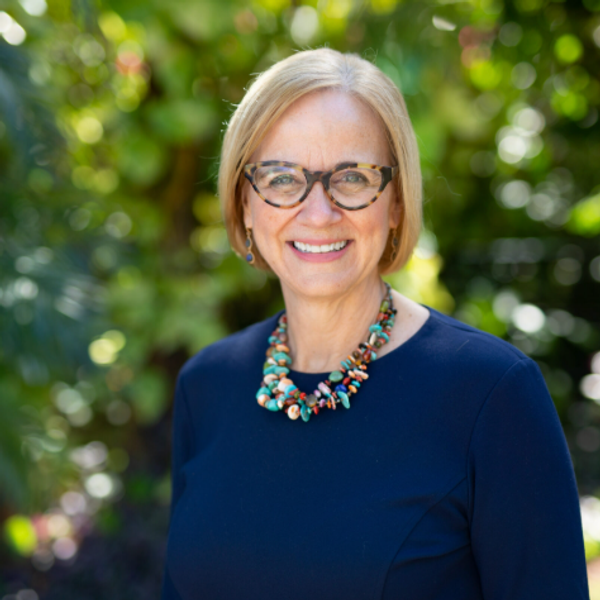Let’s Mock The Idiots Who Think Vaccines Are More Dangerous Than Covid-19
Reprinted with permission from DC Report
The arrival of effective Covid vaccines has revealed a grave failure in American education. Tens of millions of Americans, the ones who say they will never get vaccinated because there's no need or because they don't trust the vaccines, somehow made it through years of mandatory schooling without learning numbers.
That they failed grammar school 'rithmetic is obvious if you ask two questions:
- How many unvaccinated Americans has Covid killed?
- How many vaccinated Americans has Covid killed?
The answers: 577,000 and 74.
That's 7,800 unvaccinated people dying for each one who was vaccinated.
And what of infectious cases? The latest Centers for Disease Control and Prevention count is 32,472,201 Americans infected of whom just 5,800 were vaccinated. Only 396 of those vaccinated yet sick required hospitalization.
No vaccine is totally effective, especially not at first. When I was a boy in the 1950s, about 160,000 people a year, mostly children, contracted polio. More than a thousand died each year. Then we got the polio vaccines. First came the dead virus Salk vaccine in 1955, and then in 1961 the much more effective Sabin vaccine, which used a weakened but living poliovirus.
Back then some polio cases were associated with vaccination, mostly because one manufacturer had poor quality controls. That's an argument for rigorous regulation and inspection backed up by severe punishments like prison time for owners and managers who play cheapskates on safety. It's not an argument for avoiding vaccines.
The polio vaccines worked although the United States approved the Sabin vaccine only after the Soviet Union allowed it to be administered to children in then-Communist Russia.
Parents today have no idea about the universal pre-1955 fear among parents that their babies would end up in iron lungs or worse. The last time a new polio case originated in America was 1979.
Few Deaths Among Vaccinated
As for the current pandemic, death is rare among people who are fully vaccinated. That means up to two shots and two weeks out from the date of the last shot. Covid deaths will become even rarer going forward, provided that vaccination becomes near-universal.
And yet 10s of millions of Americans believe—with absolutely no basis in verifiable fact—that the Covid vaccines are riskier than going without.
Rampant innumeracy helps explain the insane news that almost one in five healthcare workers doesn't plan to get vaccinated, as The Washington Post reported in March. Almost a third of Massachusetts State Police have not been vaccinated, and say they don't plan to be, either.
Ditto for thousands of healthcare workers in North Carolina hospitals. To persuade all state employees to get vaccinated, Maryland pays $100 but does not punish those who refuse.
Consider what a friend paraphrased this week: A doorman at her Manhattan apartment said he thought his risk was higher if he got vaccinated.
Here's the other side of the story if tens of millions never get vaccinated:
The coronavirus will keep spreading to new human hosts. It randomly will mutate until a new variant proves even more infectious than the viruses circulating now, which will likely spark another pandemic, putting us all back into lockdown.
Virus Runs Rampant
Oh wait, that's already happening with pernicious new variants in Brazil, Britain, and South Africa. Look at the contagion gone wild in India where a lack of beds, supplies, and oxygen means hospitals turn away people.
Sorry, you're just going to die because Prime Minister Narendra Modi failed to prepare for a pandemic even after seeing Donald Trump's lethally incompetent pandemic mismanagement in America.
Now imagine a new coronavirus variant with characteristics like MERS, the Middle East Respiratory Syndrome. In the past decade, it's only infected about 2,600 people—a third of them died. MERS is still around. It's just been contained, which is what vaccination is supposed to do with Covid.
A mutated virus that kills not fewer than two percent of those infected, as with Covid, but 33 percent of those infected, would devastate American society for decades.
It would mean death on the scale of the recurring Black Death pandemics that ravaged Europe for three centuries killing a third of the populace. Had that been the mortality rate for Covid, more than 11 million Americans would be dead.
Viruses don't respect borders, beliefs or governments. They operate on the same principle as cancer cells—growth for the sake of growth, even though they kill the host and thus their own colonies.
Thoughtless as the coronavirus is, it moves around the globe efficiently, carried to every corner of Earth by human hosts in jetliners. And that means we need universal global vaccination because people in India are dying from this virus and its variants are a threat to people in Indiana.
Wealthy Nations Need To Step Up
At two shots per person that's close to 16 billion doses, though it may well be that half as many will do the trick because we don't all live in packed modern urban areas.
That will cost a fortune and yet we as Americans have a direct interest, just as do residents of other wealthy countries, in paying to vaccinate people in poor countries because it's for our own well-being, our own protection.
This global cost brings us back to innumeracy. How did tens of millions of our fellow Americans get high school diplomas without grasping simple issues about numbers?
Students, which of these is more? 577,000 or 74?
Aw, gee, teacher, I can't tell the difference.
How do people like the quarter of New York City cops who have not been vaccinated even get hired for a job that requires critical thinking skills, while distinguishing between 577,000 and 74 is pretty basic? (This may help explain why we have so many bad shootings by police; too little emphasis during hiring on critical mental skills.)
Surely the public schools—as well as private and parochial schools that are supposed to meet government standards— are failing to teach about numbers and about the basics of science in a meaningful way.
Stupid Republican
We have numerous members of Congress, Republicans all it turns out, who are proudly anti-science or scientific illiterates. They are so ill-informed they don't know the difference between "climate" and "weather" and evidently don't want to learn, either.
Such ignorance is found across America. Some people moronically believe that science is just another religion.
Then there are the fools who teach the absurd notion that people and dinosaurs coexisted.
Innumeracy would be less common but for a decision by PBS more than four decades ago to cancel The Electric Company, the daily kids show about numbers and their relationships. It lasted for only 780 episodes over six seasons.
The Electric Company died because there were no puppets, toys and related merch to sell to kids, unlike Sesame Street, which lasted 51 seasons on public television before moving to HBO, making it unavailable to millions of children whose parents can't afford the pay-TV service.
If only someone had created the Sign family of puppets—Equals, Plus, Minus, and all their symbolic cousins. Then maybe the total numbers from puppet sales would have multiplied into enough funds to cover production costs, adding up to a positive product, namely more Americans learning their numbers and relationships between numbers.
There are, of course, other factors influencing those saying no to vaccination.
Religious Foolishness
Some hold mystical beliefs, like the Ohio woman on CNN who said she would never get infected nor would those around her because she was "covered in the blood of Jesus Christ." Some anti-mask and anti-social distancing pastors insisted that Covid was no danger, punishment for fornication, or other nonsense—only to die from the disease.
Then there are the lies posed as questions by Tucker Carlson of Fox, who falsely says officials won't answer questions about vaccination, questions that have been answered without hesitation both broadly and in fine detail. Some Trumpers see vaccination as supporting President Joe Biden, oblivious that Donald Trump and Melania got vaccinated in secret even though he had the disease and recovered.
And then there are the crazy and incoherent QAnon-type conspiracy theorists who spread the silly lie that Big Brother plants tracking agents in the vaccine. Can we recognize and discuss mass paranoia, per the many DCReport essays by Dr. Bandy X. Lee?
In California, Orange County Supervisor Don Wagner asked Dr. Clayton Chau, the county's chief public health officer, about trackers in the vaccines. Dr. Chau laughed openly.
Later Wagner said that laughing was what he wanted because he was trying to persuade some constituents that the idea of a tracker in the vaccines is loony.
Taking the supervisor at his word, I think he's on to something. The smart response to anyone who says the vaccine is riskier than not is to laugh—loudly, openly and heartily. That's not taking away their free speech; it's using our free speech to respond with the derision their idiocy deserves.
We have good reason to mock and shame these people by calling them out for what they are: stupid, uneducated fools; children posing as adults; selfish little spirits who care only about themselves and not their neighbors.
We should make them social pariahs because they are endangering us all by needlessly increasing the risk of a new pandemic or a deadly future wave of the current Covid crisis.












